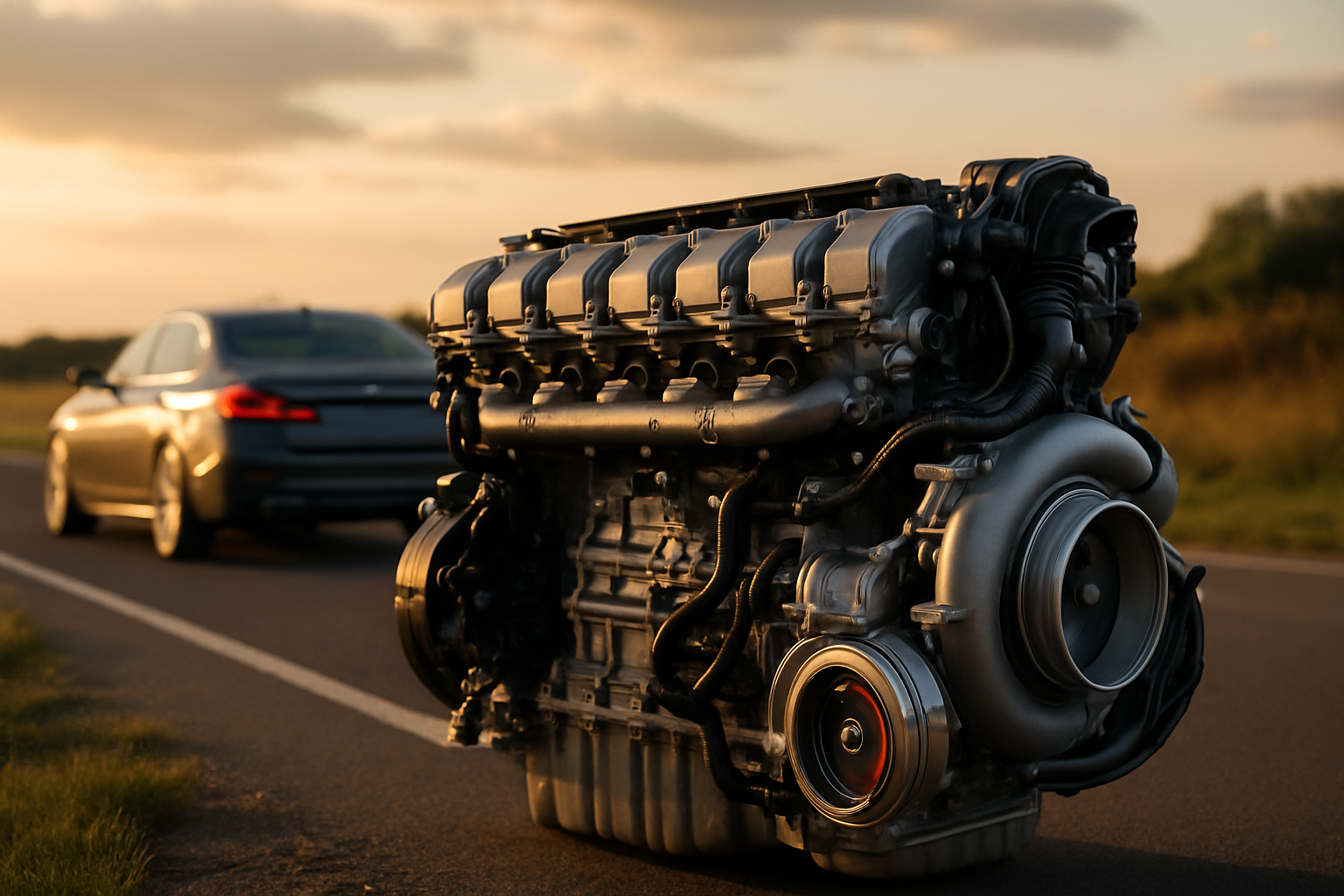Chevrolet Convertibles — Guide to Models, Features, Ownership, and Maintenance
Chevrolet has a storied history of producing convertibles that blend American muscle, open-air freedom, and modern technology. From classic roadsters to contemporary performance machines, these vehicles offer a unique driving experience that appeals to enthusiasts and casual drivers alike. Understanding the available models, their features, and what ownership entails can help you make an informed decision about whether a Chevrolet convertible fits your lifestyle and budget.

Chevrolet convertibles represent a distinctive segment of the automotive market, combining performance, style, and the exhilarating experience of top-down driving. Whether you’re drawn to the raw power of a muscle car or the refined comfort of a touring convertible, Chevrolet’s lineup has historically offered compelling options. This guide explores the key aspects of owning and maintaining these vehicles, from model selection to everyday practicality.
Popular Chevrolet Convertible Models and What Sets Them Apart
Chevrolet’s convertible heritage centers primarily around the Camaro and Corvette, two iconic nameplates that have defined American performance for decades. The Camaro convertible offers a blend of accessibility and power, available in multiple trim levels ranging from turbocharged four-cylinder engines to supercharged V8 powerplants. Its retro-inspired design pays homage to classic muscle cars while incorporating modern aerodynamics and safety features.
The Corvette convertible represents the pinnacle of Chevrolet’s sports car engineering. The latest generation features a mid-engine layout, a departure from tradition that dramatically improves handling dynamics and weight distribution. Both models offer distinct personalities: the Camaro emphasizes aggressive styling and straight-line performance, while the Corvette focuses on balanced handling and exotic-car credentials at a relatively attainable price point.
Historically, Chevrolet also produced other convertibles like the SSR pickup-roadster hybrid and various sedan-based drop-tops, though these have been discontinued. The current focus remains on performance-oriented models that deliver thrilling driving experiences.
Key Performance, Handling, and Powertrain Features
Performance capabilities vary significantly across Chevrolet convertible models depending on trim level and engine choice. Entry-level Camaro convertibles typically feature turbocharged four-cylinder engines producing around 275 horsepower, providing adequate acceleration while maintaining reasonable fuel economy. Mid-range V6 options deliver approximately 335 horsepower, striking a balance between performance and daily usability.
High-performance variants push boundaries considerably further. The Camaro ZL1 convertible employs a supercharged 6.2-liter V8 generating over 650 horsepower, capable of accelerating from zero to sixty in under four seconds. Similarly, Corvette convertibles range from the base Stingray with around 490 horsepower to the track-focused Z06 and ZR1 variants producing well over 600 horsepower.
Handling characteristics benefit from sophisticated suspension systems, including magnetic ride control on higher trims. This technology adjusts damping rates in milliseconds, optimizing ride quality and cornering stability. Performance-oriented models feature limited-slip differentials, performance brakes, and wider tires to maximize grip and control. The convertible structure, while slightly heavier than coupe counterparts, maintains impressive rigidity through reinforced chassis engineering.
Comfort, Technology, and Interior Options
Modern Chevrolet convertibles offer surprisingly refined interiors considering their performance focus. Base models include essential comfort features like climate control, power-adjustable seats, and quality audio systems. Higher trims add premium leather upholstery, heated and ventilated seating, and advanced infotainment systems with large touchscreen displays.
Technology integration includes smartphone connectivity through Apple CarPlay and Android Auto, allowing seamless access to navigation, music, and communication apps. Premium audio systems from manufacturers like Bose deliver concert-quality sound even with the top down, using strategically placed speakers and noise-cancellation technology.
Driver assistance features have expanded in recent years, with available options including blind-spot monitoring, rear cross-traffic alert, forward collision warning, and parking sensors. Performance data recorders allow enthusiasts to capture track sessions and analyze driving metrics. Head-up displays project vital information onto the windshield, keeping eyes on the road.
Convertible top mechanisms have evolved significantly, with power-folding hardtops or fabric roofs that operate in seconds at the touch of a button. Many models allow top operation at low speeds, adding convenience during parking or slow traffic. Insulation and weatherproofing have improved dramatically, making year-round driving more comfortable.
Buying, Financing, and Ownership Considerations
Purchasing a Chevrolet convertible involves several financial considerations beyond the initial price. New Camaro convertibles typically start around $32,000 for base models, while high-performance variants can exceed $70,000. Corvette convertibles begin near $70,000 for the Stingray, with top-tier models approaching or exceeding $150,000. Used models offer more accessible entry points, though depreciation varies based on model year, condition, and mileage.
Financing options include traditional auto loans, manufacturer financing programs, and leasing arrangements. Interest rates depend on credit scores, loan terms, and current market conditions. Leasing may appeal to those who prefer lower monthly payments and regular vehicle updates, though mileage restrictions and wear-and-tear charges apply.
Insurance costs for performance convertibles typically exceed average rates due to higher repair costs, theft risk, and performance capabilities. Obtaining quotes from multiple providers before purchase helps budget accurately. Factors affecting premiums include driver age, location, driving history, and chosen coverage levels.
Ownership costs extend beyond purchase price and insurance. Fuel economy ranges from moderate to poor depending on engine choice and driving style. High-performance models often require premium gasoline, increasing fuel expenses. Tire wear accelerates with spirited driving, and performance tires carry premium pricing. Registration fees, taxes, and potential storage costs for seasonal use should factor into budgeting.
| Aspect | Estimated Cost Range | Notes |
|---|---|---|
| New Camaro Convertible | $32,000 - $75,000 | Varies by trim and options |
| New Corvette Convertible | $70,000 - $150,000+ | Base to high-performance models |
| Annual Insurance | $1,500 - $4,000+ | Depends on coverage and driver profile |
| Premium Fuel Costs | $2,500 - $4,000/year | Based on 12,000 miles annually |
| Performance Tire Set | $800 - $2,000 | Replacement every 15,000-30,000 miles |
Prices, rates, or cost estimates mentioned in this article are based on the latest available information but may change over time. Independent research is advised before making financial decisions.
Maintenance, Safety, and Practical Tips for Everyday Use
Proper maintenance ensures reliability and preserves value. Regular oil changes remain fundamental, with intervals typically ranging from 5,000 to 7,500 miles depending on driving conditions and oil type. Synthetic oil is often recommended or required for performance engines. Brake fluid, coolant, and transmission fluid require periodic replacement according to manufacturer schedules.
Convertible-specific maintenance includes top mechanism care. Fabric tops benefit from regular cleaning with specialized products and protective treatments to prevent fading and water penetration. Power mechanisms require occasional lubrication and inspection of hydraulic components. Weatherstripping should be checked periodically and replaced if cracking or leaking occurs.
Safety features on modern Chevrolet convertibles include multiple airbags, stability control, traction control, and reinforced rollover protection structures. While convertibles historically lagged coupes in crash protection, contemporary models achieve respectable safety ratings through advanced engineering. However, the open-roof design inherently offers less protection than enclosed vehicles in certain accident scenarios.
Practical everyday use requires some compromises. Cargo space is limited, particularly with the top stowed. Rear seats in two-plus-two configurations like the Camaro offer minimal adult accommodation but work for children or additional storage. Weather considerations matter more than with conventional vehicles—sudden rain requires quick top deployment, and extreme temperatures affect comfort more significantly.
Winter storage in harsh climates protects the vehicle and top mechanism from damage. If driving year-round, undercoating helps prevent rust, and frequent washing removes corrosive road salt. Covering the vehicle when parked outdoors protects the top and paint from UV damage and environmental contaminants.
Regular inspections catch potential issues early. Check tire pressure and tread depth frequently, as performance tires wear unevenly if alignment is off. Monitor fluid levels between service intervals, particularly on high-performance models that stress components more heavily. Addressing minor issues promptly prevents costly repairs and maintains driving enjoyment.
Chevrolet convertibles offer an engaging ownership experience that balances performance, style, and open-air freedom. Understanding model differences, ownership costs, and maintenance requirements helps ensure years of satisfying driving. Whether cruising coastal highways or attacking canyon roads, these vehicles deliver distinctively American automotive character.




